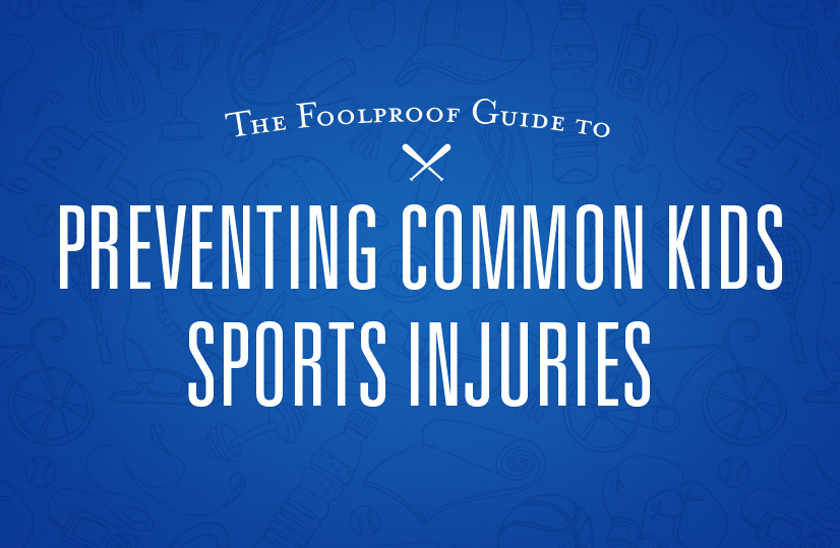According to the Centers for Disease Control and Prevention (CDC), more than 2.6 million children and teens go to the emergency room each year for treatment of injuries that occurred during organized sports or pick-up games.
By knowing the most common sports injuries in children, you can take steps to protect your kids and keep them out on the field instead of out of the game.
Sprains & Strains
Sprains and strains top the list of most common sports injuries in young athletes, according to the National Institute of Arthritis and Musculoskeletal and Skin Diseases. A type of acute injury, sprain and strain injuries happen suddenly and are usually the result of some sort of trauma, like a twist, fall or collision with another player.
To decrease your child’s chances of being injured by a sprain or strain, ensure that he or she has – and always uses – the proper safety equipment. Pay close attention to fit as well. Better fitting gear will be more effective, so hand-me-downs from older siblings and neighbors are not always the best option.
Another way to prevent sprain and strain injuries is to encourage your child to properly warm up before and cool down after all of his or her practices and games.
Overuse Injuries
Although overuse injuries like hairline fractures and tendonitis are often associated with adults, they are also one of the most common types of sports injury among children and teenagers.
Overuse injuries occur when a part of the body is worked repeatedly without adequate time to recover. Unlike acute injuries, overuse injuries can be difficult to detect because they develop gradually. According to Safe Kids Worldwide, children who participate in two or more sports where similar muscles are used, like swimming and baseball, are at a higher risk of overuse injuries than those who participate in sports with different muscle emphasis.
We’ve all heard the saying “practice makes perfect,” but when it comes to preventing overuse injuries it’s important that your child has an off-season as well. Safe Kids Worldwide recommends that kids get 10 consecutive weeks of rest from any one sport every year.
Using the proper safety equipment and encouraging warm-ups and cool-downs will help to prevent your child from developing an overuse injury in addition to preventing a sprain or strain.
Heat-Related Illnesses
Heat cramps, heat exhaustion and heat stroke are all examples of heat-related illnesses common in children’s sports. These illnesses are especially serious in younger athletes because children have a higher core body temperature than adults and are not always able to recognize when their bodies need a break.
Early recognition is key to preventing heat-related illness, so it’s important that you know the signs and watch for them in your children. According to Johns Hopkins, disorientation, dizziness, weakness, headache, vomiting and unusual behavior are some of the most common symptoms.
Other easy ways to prevent heat-related illnesses are to maintain hydration before, during and after a sporting event and to wear breathable, light-colored clothing to help cool body temperature.
More Prevention Tips
The best way to keep your young athlete safe is to ensure that he or she is enrolled in an organized, reputable program. A well-trained coach will teach the correct technique, enforce the use of safety equipment, require the proper warm-up and cool-down exercises and recognize the signs of injury or illness in a player.
No parent can prevent every injury. Remember that accidents happen and if your young athlete is hurt, getting the necessary medical care is the first step to recovery. Talk to your child’s doctor or coach if you have additional questions about sports safety.
Advice or recommendations are for informational or educational purposes only, not a substitute for a visit or consultation with your doctor.
Get more information about specific health terms, topics and conditions to better manage your health on bcbst.com. BlueCross BlueShield of Tennessee members can access wellness-related discounts on fitness products, gym memberships, healthy eating and more through Blue365®. BCBST members can also find tools and resources to help improve health and well-being by logging into BlueAccess and going to the Managing Your Health tab.



1 Comment
WellTuned provides inspiration and practical advice for healthy living.
WellTuned does not offer medical advice. Any personal health questions should be addressed to your doctor.